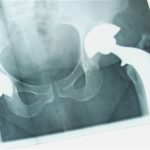Author: Ian Murnaghan BSc (hons), MSc of www.explorestemcells.co.uk
Sepsis is a potentially deadly health condition that happens when a person has an infection that spreads through their body. It leads to wide-spread inflammation as well as pain, blood clotting and organ damage. In addition, the effects of sepsis occur in a relatively short period of time.
There are few effective treatments today although antibiotics are frequently used, and can offer some help. Therefore, finding new treatments is important and stem cells may be one such new weapon to fight sepsis.
Using Bone Marrow Stem Cells
Researchers recently experimented with bone marrow stem cells to see if it could treat sepsis. They found that these stem cells might be able to triple the odds of a person surviving the condition.
A Stronger Immune System
The bone marrow stem cells used are known as mesenchymal stem cells. These particular stem cells were already known to be beneficial to supporting a person’s immune system and helping repair tissues that had been damaged. Mesenchymal stem cells are isolated in the bone marrow of adults and have previously shown promise in treating other health conditions.
Stem Cells to Treat Sepsis
To see if stem cells could help treat sepsis, mice afflicted with sepsis were used for the experiment. Harmful bacteria in the gut were released into the rest of the body, which then caused infection and organ damage. After the infection was triggered, researchers then gave half of these mice an injection of the stem cells. Antibiotics were also used, including for the other group of mice that didn’t get the stem cells.
After only five days, half of the animals that had the stem cell treatment were alive while only fifteen percent of the other ones were alive. With sepsis being an extremely deadly condition, the results are very promising that in the future, we could use adult stem cells to improve the outcomes for people who suffer from sepsis.
Other Positive Results
Researchers also conducted additional experiments on the mice that received the adult stem cells. They found that these mice had better health overall and in key organs such as their lungs, as well as less bacteria and inflammation throughout the body. They showed less inflammation damage and also better infection-fighting capabilities.
Helping Improve Sepsis Outcomes
For patients who have sepsis, approximately a quarter of them with a severe form of the condition will die. The limited number of treatments makes it vital that we find new ways to improve the odds. Another important benefit of the stem cells is that they worked quickly. One of the challenges with sepsis is that even where a person survives, they can be left with lasting damage.
Reducing Healthcare Costs
The main benefit with mesenchymal stem cells is that the treatment does not simply work to improve the health of one specific organ or part of the body. Instead, the adult mesenchymal stem cells target many different paths that are part of the infection. This helps reduce the risk of long-term damage as well.
With sepsis being one of the major causes of mortality in a hospital intensive care unit, adult stem cell treatments could help reduce the hundreds of thousands of lives lost to the disease each year. In places such as North America, they could also help us to reduce the billions of dollars spent in medical costs.






